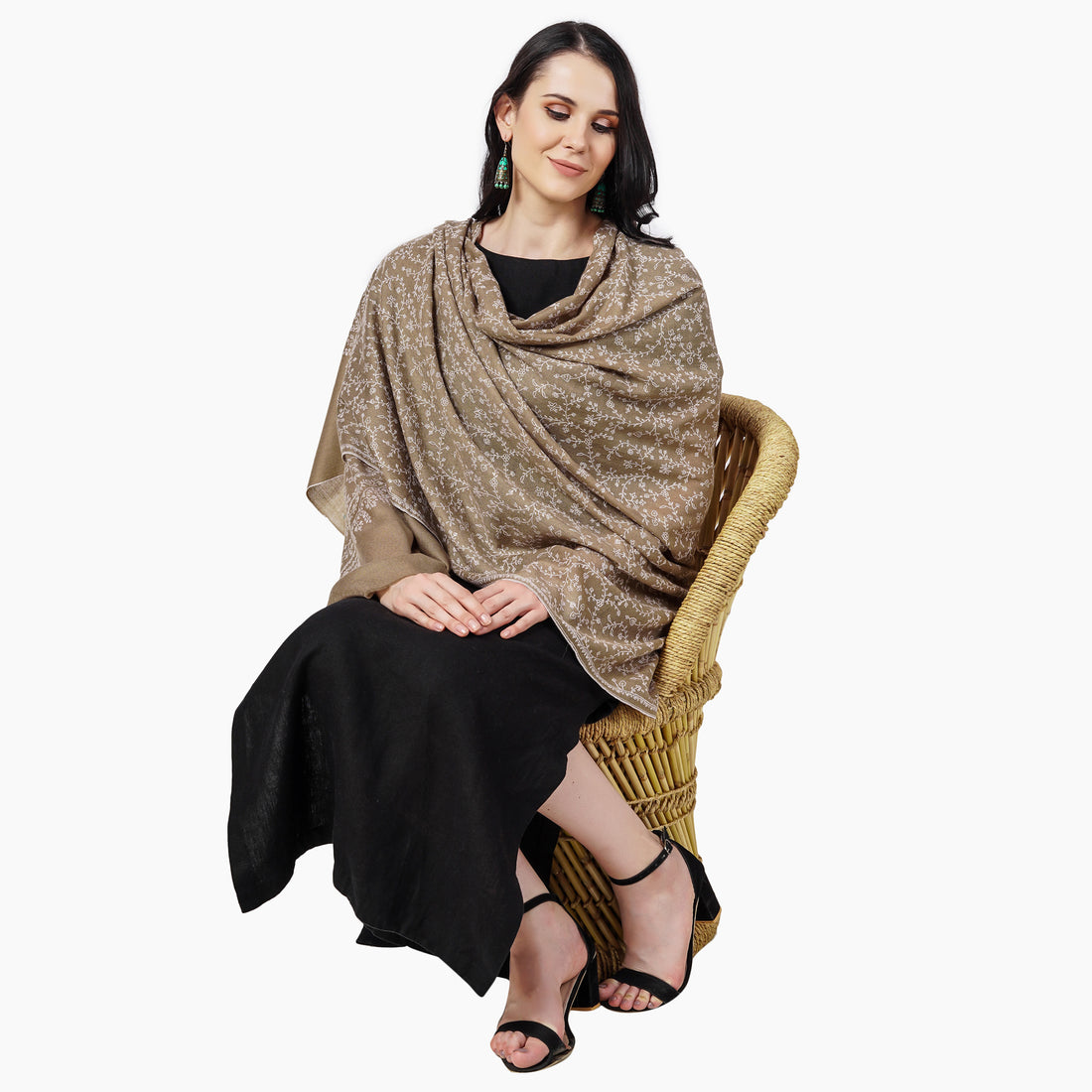
A Journey Through Time: The History of Pashmina Shawls
Share
Introduction to Pashmina Shawls
The Pashmina shawl is a luxurious and highly sought after textile that has been prized for centuries. The term "pashmina" comes from the Persian word "pashm," meaning soft and delicate, and these shawls are known for their softness, warmth, and intricate patterns. Pashmina shawls are considered to be one of the most luxurious textiles in the world, and their popularity and demand have only continued to grow over time.
The history and craftsmanship behind pashmina shawls is a testament to the skill and creativity of the artisans who produce them. From the high altitudes of the Himalayas, where the pashmina goat produces a fine undercoat to protect itself from the cold, to the courts of the Mughal Empire, where pashmina shawls were prized for their beauty and luxury, and the rich cultural history of Kashmir, where pashmina shawls are still produced today, the story of the pashmina shawl is one of timelessness and elegance.

Origin of Pashmina Shawls
Pashmina shawls originated in the high altitudes of the Himalayas, where the pashmina goat produces a fine undercoat to protect itself from the harsh, cold climate. For centuries, the locals of the region have hand-combed this undercoat, spinning and weaving it into shawls and other textiles.
The pashmina goat is a hardy breed that can survive in the harshest of conditions, and its fine undercoat has long been prized for its warmth and softness. In order to harvest the undercoat, the goats are combed by hand, a process that requires great care and attention to detail. The undercoat is then spun into fine yarn, which is then woven into shawls and other textiles.
The process of hand-combing the pashmina undercoat is a time-honored tradition that has been passed down from generation to generation, and it is an important part of the history and culture of the region. The artisans who produce pashmina shawls are known for their skill and precision, and their work is highly valued for its beauty and quality.
Rise in Popularity in the Mughal Empire

It was in the 15th century that the pashmina shawl gained popularity among the royalty of the Mughal Empire. The Mughals were known for their love of luxury textiles, and pashmina shawls quickly became a symbol of wealth and status. The intricate patterns and high-quality wool made pashmina shawls a highly sought-after item, and they were often traded along the Silk Road.
The Mughal Empire was one of the largest and most powerful empires in history, and its rulers were known for their love of luxury and their appreciation for the finer things in life. Pashmina shawls were highly prized for their beauty and softness, and were often used as gifts to show appreciation or as a symbol of wealth and status.
The History of Pashmina Shawls in Kashmir

Kashmir has a long history of producing pashmina shawls, and has become a hub for pashmina production. Pashmina shawls have deep cultural and historical significance in Kashmir, where they are considered to be a symbol of tradition and elegance. Kashmiri artisans have continued to perfect the craft of pashmina weaving, producing shawls that are renowned for their intricate patterns and high quality.
Kashmir has a rich history of textiles, and pashmina shawls are an important part of this heritage. The artisans of Kashmir have honed their craft over the centuries, and their work is known for its beauty and durability. In the past, pashmina shawls were produced by hand using traditional methods, and the skills required to produce them have been passed down from generation to generation.
Today, the production of pashmina shawls in Kashmir is still thriving, and the industry continues to play an important role in the region's economy. The production of pashmina shawls is a complex process that involves many different stages, including hand-combing the pashmina undercoat, spinning the wool into fine yarn, and weaving the yarn into shawls. The artisans of Kashmir are known for their precision and attention to detail, and their work is highly valued for its quality and beauty.
The Craftsmanship Behind Pashmina Shawls

The craftsmanship behind pashmina shawls is a testament to the skill and creativity of the artisans who produce them. Pashmina shawls are made from a fine wool that is hand-combed from the undercoat of the pashmina goat. The wool is then spun into fine yarn, which is then woven into shawls and other textiles.
The weaving of pashmina shawls is a complex and time-consuming process that requires a great deal of skill and precision. The shawls are woven on traditional hand-looms, and the weavers must pay close attention to detail to ensure that the shawls are of the highest quality.
One of the most important aspects of the craftsmanship behind pashmina shawls is the design and pattern. Pashmina shawls are known for their intricate patterns, which are often inspired by traditional Kashmiri designs. The artisans of Kashmir are skilled in the use of traditional dyeing techniques, and they use natural dyes to produce vibrant and long-lasting colors.
Conclusion
In conclusion, the history and craftsmanship behind pashmina shawls is a testament to the skill and creativity of the artisans who produce them. From the high altitudes of the Himalayas, where the pashmina goat produces a fine undercoat to protect itself from the cold, to the courts of the Mughal Empire, where pashmina shawls were prized for their beauty and luxury, and the rich cultural history of Kashmir, where pashmina shawls are still produced today, the story of the pashmina shawl is one of timelessness and elegance.
Whether you are a fan of traditional textiles or simply appreciate the beauty of luxury items, a pashmina shawl is a must-have addition to your collection. With its softness, warmth, and intricate patterns, a pashmina shawl is a timeless piece of art that will be treasured for years to come.
also read: The benefits of Owning a Pashmina Shawl




